 1995 Nissan Sentra (B14) Dimensions, Size & Specs
1995 Nissan Sentra (B14) Dimensions, Size & SpecsMeasurements of the 1995 Nissan Sentra, engineered for optimal performance and comfort
| Dimensions | |
|---|---|
| Length: | 4230 mm166.5 in13.9 ft |
| Width: | 1670 mm65.7 in5.5 ft |
| Height: | 1395 mm54.9 in4.6 ft |
| Trunk Capacity: | 328 liter11.6 cu ft |
| Weight Specifications | |
| Curb Weight: | 960-1064 kg2116-2346 lbs |
| Tire Specifications | |
| Rims Size: |
|
| Tire Sizes: |
|
The 1995 Nissan Sentra (B14) represents the fourth generation of Nissan’s compact sedan, produced between 1994 and 1999. Known for its balance of practicality and economy, the Sentra B14 offers a modest yet functional size suitable for city driving and small families. Measuring 4230 mm (166.5 inches) in length, 1670 mm (65.7 inches) in width, and standing 1395 mm (54.9 inches) tall, this vehicle presents a compact footprint that strikes a good balance between maneuverability and interior space.
The curb weight of the Sentra B14 ranges from 960 to 1064 kg (2116 to 2346 lbs), which aids fuel efficiency while maintaining stability and road presence. With a luggage capacity of 328 liters (approximately 11.6 cubic feet), the sedan provides practical trunk space primarily aimed at everyday use and short trips.
The Nissan Sentra B14 rides on 14-inch rims, equipped with tire size options including 155/80 R13 S, 175/65 R14, and 175/65 R14 H, catering to different driving preferences and road conditions. This generation improved upon its predecessors with refined styling and improved interior comfort, making it a popular choice among compact car buyers in the mid-1990s.
Overall, the 1995 Nissan Sentra B14 is a compact sedan that combines manageable dimensions with sufficient interior and cargo capacity, suitable for those looking for an affordable and reliable daily driver with a classic 1990s design.
Discover the standout features that make the 1995 Nissan Sentra a leader in its class
Have a question? Please check our knowledgebase first.
The Nissan Sentra B14 sedan features a length of 4230 mm (166.5 inches), a width of 1670 mm (65.7 inches), and a height of 1395 mm (54.9 inches). These compact dimensions contribute to its maneuverability and ease of parking, making it suitable for urban driving. Its size strikes a balance between offering a comfortable interior for passengers and maintaining a footprint that fits well in most city environments. The compact width and height also help improve fuel efficiency and reduce wind resistance.
The Nissan Sentra B14 weighs between 960 kg and 1064 kg (2116 to 2345 lbs) depending on the trim and equipment level. This relatively lightweight design supports nimble handling and good fuel economy, making it a practical choice for daily commuting. A lower curb weight improves acceleration responsiveness and reduces braking distances, enhancing overall driving dynamics. Despite being lightweight, the Sentra B14 maintains adequate structural integrity and stability on the road, providing a secure driving experience.
The Nissan Sentra B14 comes with a luggage capacity of 328 liters (approximately 11.6 cubic feet). This trunk space is quite generous for a compact sedan of its era, allowing it to accommodate multiple suitcases, grocery bags, or other medium-to-large items. The sizeable trunk makes it suitable for trips, daily errands, or transporting sports equipment, while the relatively low lift-over height simplifies loading and unloading. Overall, the storage space is practical for typical family or commuter needs.
The Nissan Sentra B14 was either fitted with 14-inch rims or 13-inch/14-inch tires depending on the specific equipment variant. The common rim size is 14 inches, paired with tire sizes such as 155/80 R13 S, 175/65 R14, and 175/65 R14 H. These tire dimensions offer a good compromise between ride comfort, traction, and fuel efficiency while maintaining affordable replacement costs. This selection also supports consistent handling performance suitable for everyday driving.
Yes, the Nissan Sentra B14 comfortably fits into a standard residential garage. With a length of 4230 mm (166.5 inches) and a width of 1670 mm (65.7 inches), it occupies considerably less space than many modern sedans or SUVs. Almost all typical single-car garages, which usually measure around 6 meters (20 feet) in length and 2.7 meters (9 feet) in width, provide more than enough room for the Sentra B14 along with space for opening doors and maneuvering around the vehicle. This makes it a very practical car for homeowners with conventional garages.
Compared to its predecessor, the Sentra B13, the B14 generation grew slightly in size, offering more interior space and trunk capacity. The B14 measures 4230 mm in length compared to the B13's roughly 4180 mm, and it also features a modest increase in width and height. This incremental growth translates into better passenger comfort, more legroom, and an expanded cargo area, enhancing its appeal as a compact sedan. The B14's increased dimensions helped it remain competitive in the evolving compact car market of the mid-1990s.
In comparison to other compact sedans of the mid-1990s, such as the Honda Civic, Toyota Corolla, and Ford Escort, the Nissan Sentra B14 holds its own in size with its 4230 mm length, 1670 mm width, and 1395 mm height. For instance, the Honda Civic of that era was slightly shorter and narrower, while the Toyota Corolla was similar in length but often a bit wider. The Sentra's dimensions offer competitive passenger space and trunk capacity among its peers. Its lightweight design also provides advantageous fuel efficiency and nimble handling relative to competitors.
While precise interior dimensions vary by trim, the Nissan Sentra B14 provides a comfortable cabin for a compact sedan, with adequate headroom, legroom, and shoulder space for up to five passengers. The slightly increased exterior dimensions compared to the prior generation translate into improved front and rear legroom, making longer journeys more comfortable. The compact height is well balanced with ample head clearance. The 328-liter trunk supports the needs of small families or commuters, promoting a practical, everyday usability environment.
Thanks to its lightweight curb weight ranging from 960 to 1064 kg (2116 to 2345 lbs) and compact size, the Nissan Sentra B14 offers commendable fuel economy typical for sedans of its class and era. Depending on engine and transmission choice, many drivers could expect approximately 7 to 8 liters per 100 km (roughly 30-34 miles per gallon) in mixed driving conditions. Its small tires and efficient design help maintain low rolling resistance, contributing positively to economy figures, making it an economical choice for daily commuting and city driving.
The Sentra B14 introduced several advancements over the B13, including improved chassis stiffness and suspension tuning, which enhanced handling and ride comfort. There were updates to the braking system, often including optional front disc brakes with rear drum brakes for better stopping power. Additionally, safety features like improved seatbelt systems and structural reinforcements were incorporated to meet evolving safety standards in the mid-1990s. Mechanically, the B14 benefitted from more refined engines and transmissions providing reliability and smoother operation compared to its predecessor.
Discover similar sized cars.
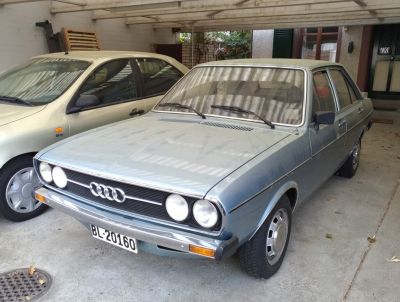
| Production: | 1972-1976 |
|---|---|
| Model Year: | 1972 |
| Length: | 4175-4220 mm164.4-166.1 in |
| Width: | 1600 mm63.0 in |
| Height: | 1362 mm53.6 in |
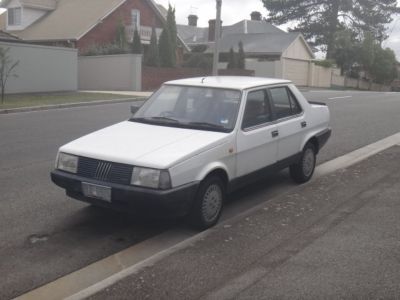
| Production: | 1983-1990 |
|---|---|
| Model Year: | 1984 |
| Length: | 4260 mm167.7 in |
| Width: | 1650 mm65.0 in |
| Height: | 1410 mm55.5 in |
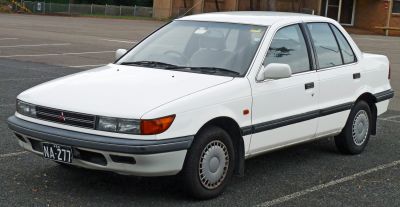
| Production: | 1988-1994 |
|---|---|
| Model Year: | 1988 |
| Length: | 4235 mm166.7 in |
| Width: | 1670 mm65.7 in |
| Height: | 1405 mm55.3 in |

| Production: | 1996-2003 |
|---|---|
| Model Year: | 1996 |
| Length: | 4277 mm168.4 in |
| Width: | 1676 mm66.0 in |
| Height: | 1430 mm56.3 in |

| Production: | 2001-2012 |
|---|---|
| Model Year: | 2001 |
| Length: | 4235 mm166.7 in |
| Width: | 1670 mm65.7 in |
| Height: | 1395 mm54.9 in |

| Production: | 2001-present |
|---|---|
| Model Year: | 2001 |
| Length: | 4290 mm168.9 in |
| Width: | 1690 mm66.5 in |
| Height: | 1430 mm56.3 in |
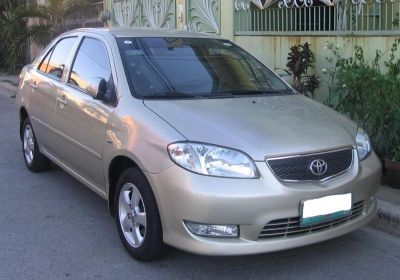
| Production: | 2002-2007 |
|---|---|
| Model Year: | 2002 |
| Length: | 4285 mm168.7 in |
| Width: | 1695 mm66.7 in |
| Height: | 1435 mm56.5 in |
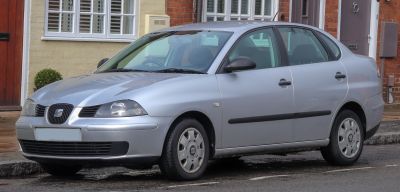
| Production: | 2002-2008 |
|---|---|
| Model Year: | 2003 |
| Length: | 4280 mm168.5 in |
| Width: | 1698 mm66.9 in |
| Height: | 1441 mm56.7 in |
